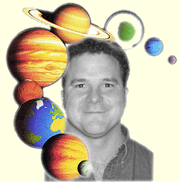 |
Sky Watch
by J. Alex Knoll
|
Comet Spawn
We may only see Halley’s Comet every 76 years, but its dust provides pyrotechnics year after year
Saturday’s new moon coincides with the peak of this year’s Orionid meteor shower. Perhaps you’ve already seen the great hunter rising in the east before midnight. Another celestial harbinger of autumn and winter, Orion brings with it the meteors bearing his namesake, which appear to emanate from above Betelgeuse, the red giant marking his left shoulder.
This is a great year for the Orionids, which could generate as many as 20 meteors an hour, beginning Friday evening, peaking before dawn Saturday and lingering through early next week.
The Orionids, like the springtime Eta Aquarids, are spawned from the passing every 76 years of Halley’s Comet, which last passed our sun in 1986. The sun’s heat melts several feet from the comet’s surface, which over time migrate from the comet’s own gravitational pull and into an independent orbit within our solar system. It’s this trail of dust, ice and other debris — not the actual comet or its tail — that earth crosses this time every year.
Scientists are unsure just how long it takes this melted matter to stray from Halley, but the measuring stick would be broken down into millennia rather than centuries. Because of their miniscule mass, the particles of dust and ice are much more at the mercy of larger celestial objects like the sun and planets, whereas the comet itself is large enough and fast enough to maintain its own orbit. Additionally, the sun’s own stellar radiation — solar wind — affects the particles, much as astronomers hope to harness the sun’s radiation for future sail-bearing spacecraft propelled by the solar wind.
As for the Orionids, these particles move fast, slamming into earth’s atmosphere at upward of 148,000 miles an hour, sometimes creating explosions that cause long-lasting trails of light streaking through the sky.